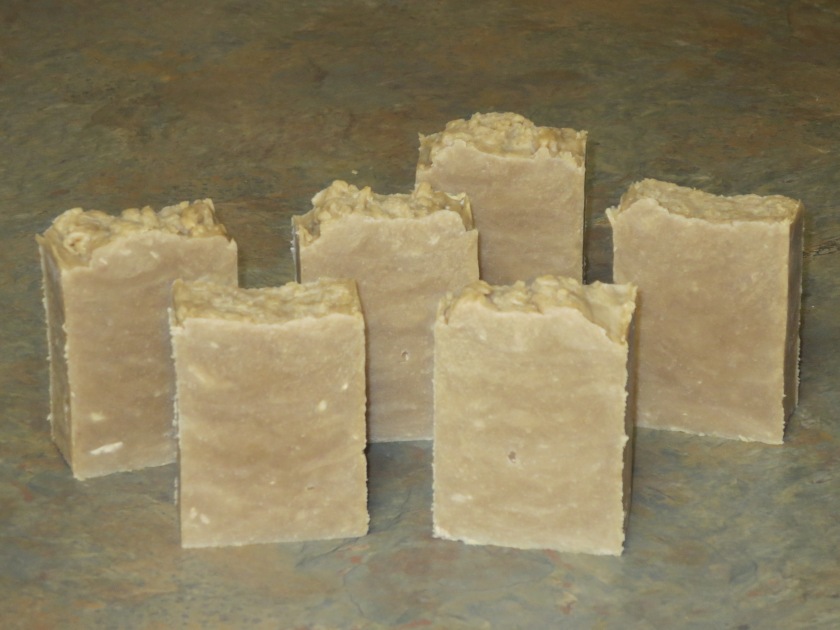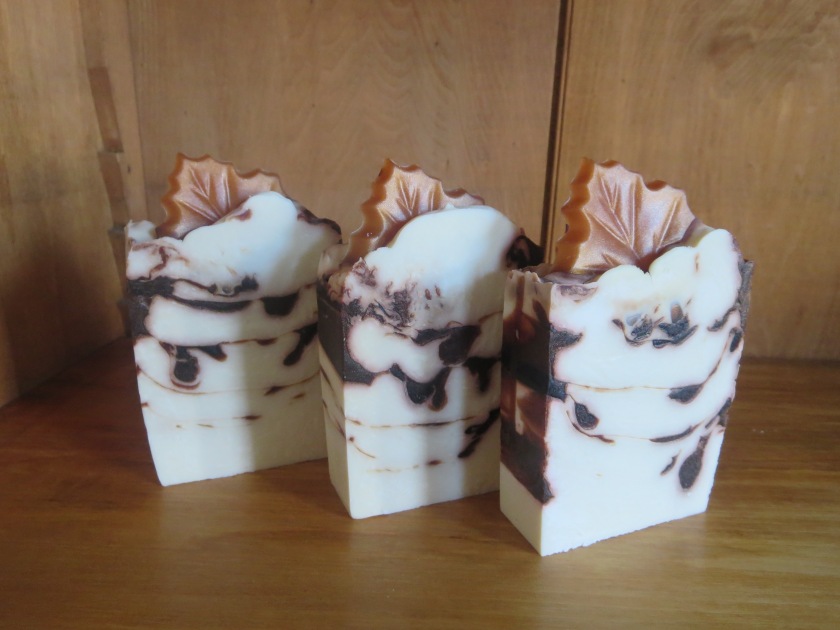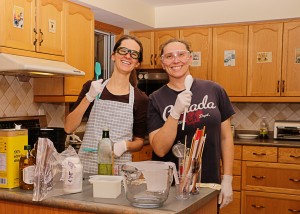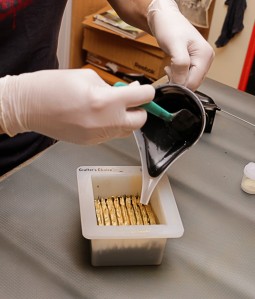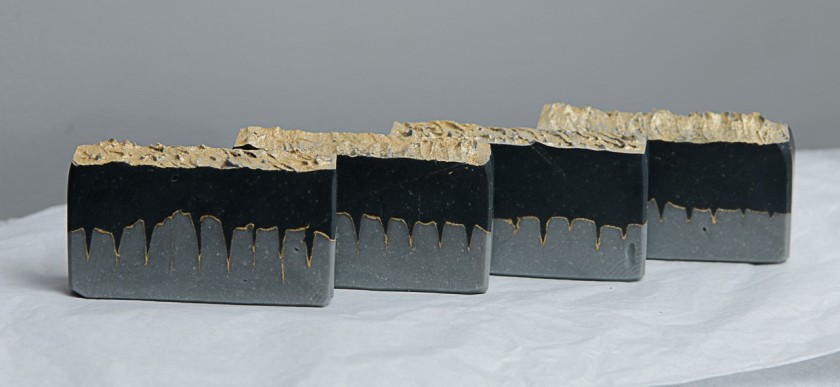Here we go again: my soap challenge # 4. I heard that this was going to be the last challenge that Amy Warden is going to host for the time being, so that was enough reason for me to get active one more time and try out this month’s technique! I have learnt so much from the few times that I participated and got so many ideas from just browsing the wonderful entries of the challenges over the last years… I will certainly miss this creative soap makers’ forum!
So, this is my entry soap called Winter Blues:

Here are some more pictures:


Toni Watt from Australia introduced us to this month’s technique, showing us in her tutorial how to pour straight lines. This involved planning a clear-cut design, calculating exact amounts of all ingredients, leaving nothing up to chance etc.: a challenge to my usual free flowing, happily experimenting, turning into higgledy-piggledy adding stuff, turning into frantically stirring and glopping, turning into cramming everything into the mold sort of soaping process.
So, I went ahead and sort of followed Toni’s instructions. Sort of, because I did not have an oven at hand in my soaping area and did not want to lug everything upstairs and start experimenting in my kitchen with all my bouncy kids and pup around. Therefore, I was not able to do the CPOP part. Also, I did use my regular recipe, which includes a good portion of palm oil. Everyone had advised against it, as we were supposed to soap at cold temperatures and you can apparently end up with stearic acid spots using palm oil. I did not know what these spots are, and I also did not have the time or brain to figure out a new recipe, so I stuck to my ol’ faithful one. Well – now I do know what stearic acid spots are 😊. Here they are – you can see them best in the bottom left corner pour (light blue ultramarine):
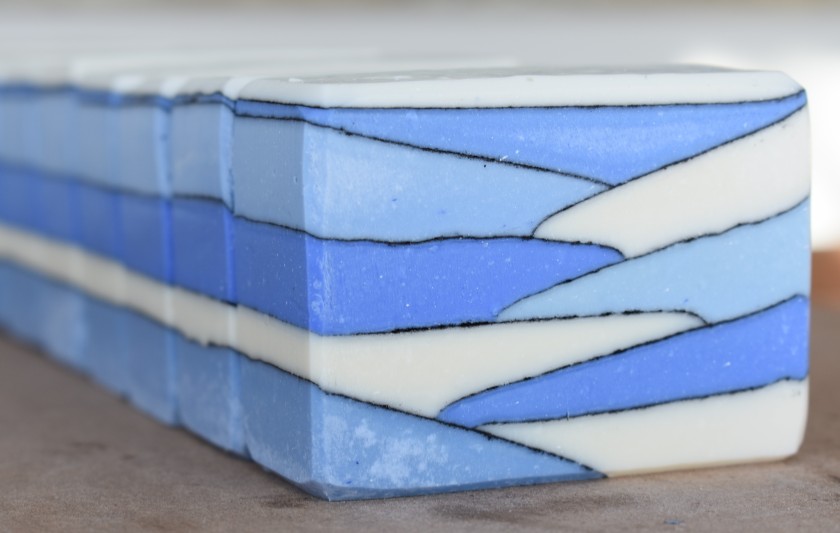
I did however follow the instructions when it came to prepping the lye-water-oil mix for each layer separately, and I also did soap at cold temps. At really cold temperatures! It was -19 Celsius that day outside, and my soaping area in our basement was not much warmer, so while wearing snow pants and many other layers I did true cold process soaping! I kept my lye water between 13-15 Celsius (that’s around 56 – 60 Fahrenheit), the oils were slightly warmer so as not to completely solidify.
I attempted an angled pour in different blues and white, each layer separated by a black mica pencil line. Colorants were Ultramarine Blue, Baby Blue Mica and water-soluble Titanium Dioxide in different combinations to create the various blue shades. I poured while propping the side of the mold up on boards of varying thickness and sometimes letting it rest horizontally. I went for ten layers, that was an easy number to divide everything by 😊. Each soap layer I sprayed with rubbing alcohol, dusted with Mica, and then sprayed again with rubbing alcohol right before pouring the next layer. I learnt somewhere that this helps the layers adhere to each other and have found it to be true (whenever I forget that step the layers always separate on me.)
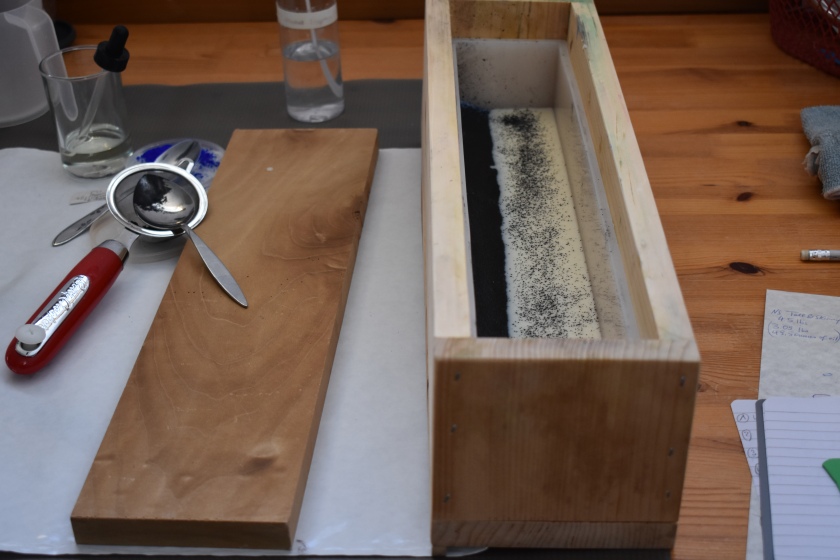
I used Peppermint Essential Oil and Eucalyptus Lemon Essential Oil to give the soap a nice, crisp scent that would work well with the ‘cold’ winter colors of the design. I have never had any trouble with these oils so I thought I’d stick to them in this experiment.
Having read from other people’s experience that this technique can take many hours (as each layer has to set before you can pour the next one) I did not attempt this at midnight like many of my other soaping projects… With one major interruption (picking up the kids from school) my soaping session did however not actually take too long, maybe 2 ½ hours. That is I think first because I did not attempt a whole lot of layers, secondly because I discounted the water quite a bit (water-lye ratio 1.5 : 1), and thirdly (and most importantly) I did use the stick blender 😊 as I could not get the colorants (esp. the Ultramarine Blue) incorporated properly without it. – I did not want to start messing around with glycerin or extra oil and therefore blended the Ultramarine right into each layer’s oil mix. – There was a clear problem in this – where my pencil lines did not end up straight is where my soap batter reached too thick of a trace thanks to the stick blender and I could not pour it completely evenly.
I also added sodium lactate, which was not only unnecessary but in this case a mistake as I did not get to unmold and cut the soap soon enough and ended up having trouble cutting it. Here are some more pictures:
Unmolding – nice and messy with all that mica dust 😊!

Wohaa…
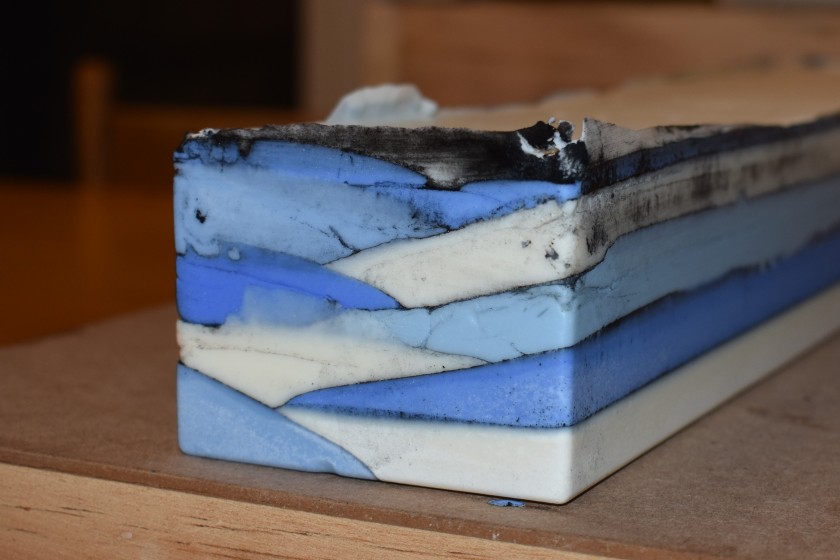
First cut – beautiful lines and colors inside 😊 !!! Can’t judge a soap by its outside…:

The soap was very hard to cut due to the water discount and the added sodium lactate…the edges were brittle and needed a major clean up:
Here are the cleaned up bars – the lines on the side of the soap ended up being nice and straight… The tilted lines on the front side still need some help, i.e. a more fluid batter…:)
I really liked the way the colors turned out and the stained glass effect the black mica lines gave to the soap! The design recaptured the feeling on that cold, snowy winter day for me quite well :)!
For the next time I try this technique I have a few things I would do differently:
- Skip the palm oil and avoid stearic acid spots.
- Skip the sodium lactate when water discounting as much as I did to avoid soap that is hard to cut and will end up with brittle edges
- Give myself more time and either skip the water discount/stick blending to make sure the batter stays more fluid or use a fragrance that slows down trace so that each layer can be poured smoothly. Again, all that depends on the recipe.
Thanks again, Toni, for teaching us this technique and Amy, for hosting this challenge one last time!
Conny










